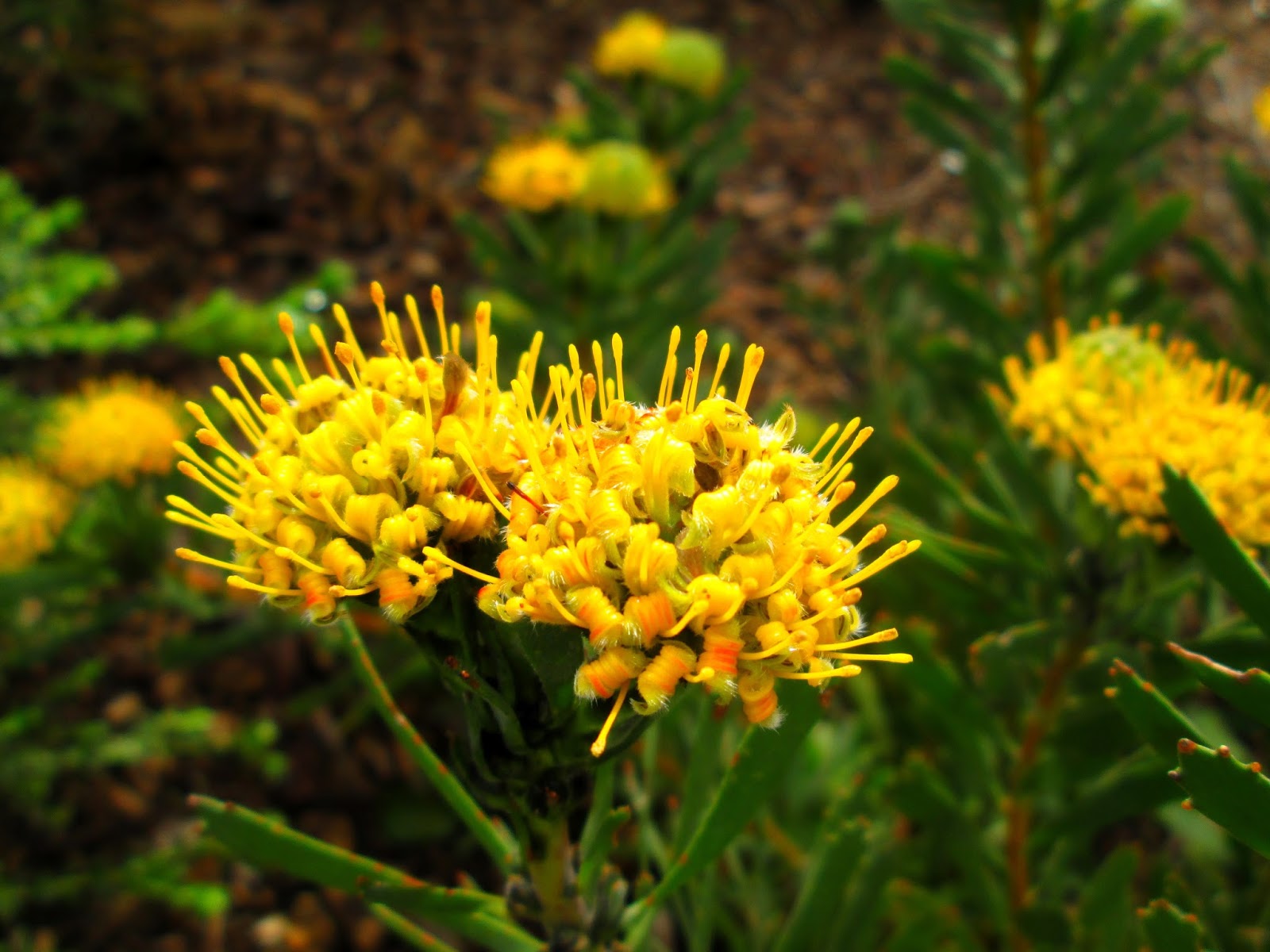The genus Erica has about 860 species in them and of that 860 species South Africa is home to 760. Their flowers have many different shapes from bottle to globe to tube to urn shaped flowers and they are mostly pollinated by birds, insects and the wind.
I always thought Erica species was such a typical fynbos plant, with their small growth habit and needle like leaves, but after seeing them in flower I look at them differently because they are such beautiful plants and easy to maintain if they are given what they need.
This month's Fab 5 wasn't easy because I was exposed to so many amazing Erica sp. It was difficult to choose only 5. I selected the best 5 flowering Erica sp. I could find (and photograph).
 |
| Erica baccans |
Erica baccans produces bright cherry pink splashes of colour. Its common name is berry heath and is grown easily in a variety of garden conditions it even grows well in a pot. They are in full flower from September to November.
 |
| Erica patersonii |
The bright golden yellow tubular flowers are arranged in closely packed spikes. Flowering stems resemble corn on the cob, giving its common name Mealie heath. It is listed as rare and occurs in wet or marshy areas along the Western Cape. They are threatened by urban expansion and farming.
 |
| Erica blenna |
Flowers are bright orange with green tips and are sticky. They flowers from April to November. This Erica is relatively small because it is a slow grower. It is one of the most magnificent
Ericas and is well known.
 |
| Erica leucotrachela |
Erica leucotrachela has two toned tubular flowers flowering from May to October. The species is found on mountain peaks between Rooi-els and Palmiet River and is endemic to Betty's Bay. It loves growing in moist cool conditions. This
Erica really reminds me of Christmas because of its red and white flowers.
 |
| Erica haematocodon |
Erica haematocodon has deep red bell-shaped flowers and is listed as a rare plant. They are in full flower from December to February and occur naturally on rocky slopes of Cape Peninsula.
These photos were taken at
Kirstenbosch National Botanical Gardens, most of these
Ericas are grown and cultivated here as many of them are endangered or rare in their natural habitat. This is only 5 of many beautiful
Ericas displayed in the numerous sections of the garden. Once you see some of them you'll notice how enticing they are and it could just lead to a lifetime of interest.





